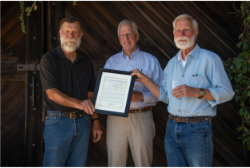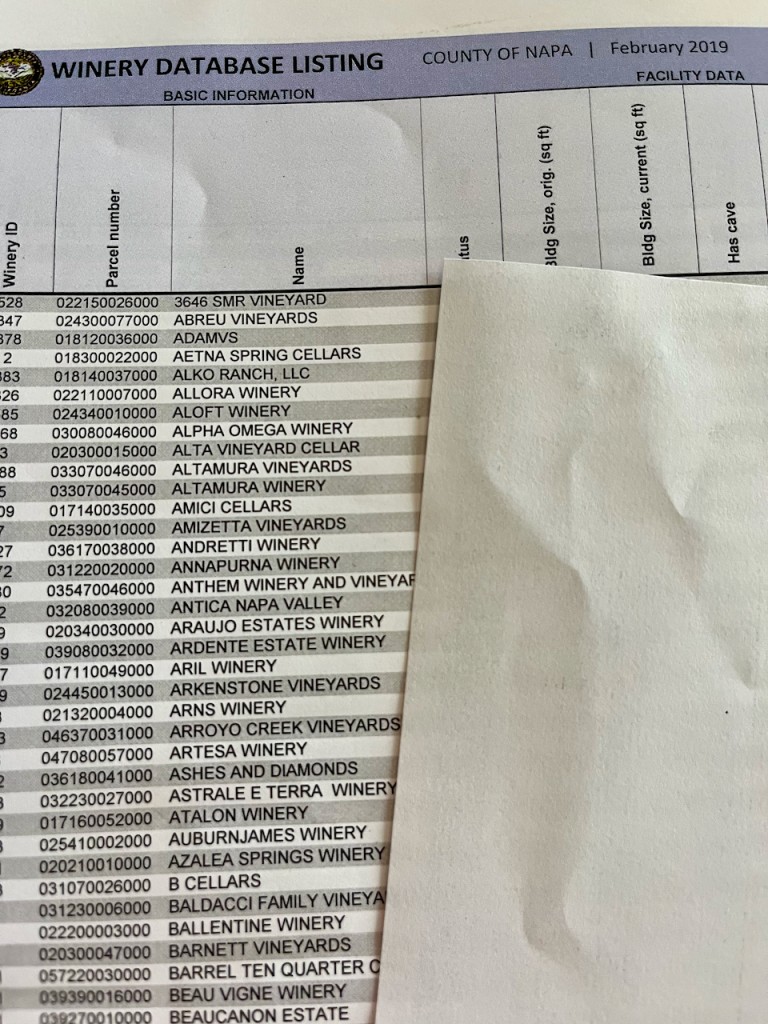 We are turning over the blog today to a guest. Amber Burke is a WSET-certified PR consultant, wine writer and influencer with a passion for sharing her knowledge and expertise in the world of wine. Having lived in Europe and California, today she’s based on the East Coast. With over 12 years of industry experience, Amber combines her skills to foster a deep appreciation for the art of wine.
We are turning over the blog today to a guest. Amber Burke is a WSET-certified PR consultant, wine writer and influencer with a passion for sharing her knowledge and expertise in the world of wine. Having lived in Europe and California, today she’s based on the East Coast. With over 12 years of industry experience, Amber combines her skills to foster a deep appreciation for the art of wine.
The wine industry has always held a unique space in the world of public relations. Wine is not just a product—it is a lifestyle symbol, a cultural touchstone, and for many, a luxury associated with celebration and social interaction. However, as global health organizations increasingly tighten their recommendations and warnings around alcohol consumption, including wine, the PR landscape for wineries, vineyards, and distributors has become more complex. Navigating this evolving environment requires a balance of strategic messaging, education, and sensitivity to public concerns.
The Shift in Health Messaging
Health warnings on alcohol consumption have intensified over the past decade. Public health bodies, like the World Health Organization (WHO), have underscored the link between alcohol consumption and various health risks, from liver disease to cancer. These warnings are not new, but they are becoming more prominent in public discourse, especially as governments and health advocates push for clearer labeling and stricter advertising regulations.
Something to note in these “studies” being released by the WHO is that they are being supplied and lobbied by Prohibitionist organizations with their own political and moral agendas.
Wine, often marketed for its supposed health benefits—such as the antioxidants in red wine—has come under particular scrutiny. The previous narrative of “a glass of wine a day” promoting heart health has been increasingly challenged by new studies suggesting that even moderate alcohol consumption carries risks. For wine producers and marketers, this creates a dilemma: How do you promote a product that, while culturally ingrained, is being targeted by evolving health science?
The Role of Wine PR
The primary role of public relations in the wine industry is to shape public perception while managing potential crises. With the growing prevalence of health warnings, PR strategies must evolve to address consumer concerns and promote responsible messaging without alienating the core audience of wine enthusiasts.
Here are some key approaches that wine PR professionals can adopt:
- Emphasizing Transparency and Responsibility
One of the most effective ways to navigate the health warnings is by leaning into transparency. Acknowledging the health risks associated with alcohol consumption and promoting responsible drinking can go a long way in building consumer trust. Wine brands that communicate openly about the potential risks, while providing guidance on moderation, will likely foster stronger connections with health-conscious consumers.
Incorporating responsible drinking messages into marketing materials and collaborating with health organizations can help brands align themselves with public health priorities, showcasing that they are aware of the issues and care about their consumers’ well-being.
- Highlighting the Craft, Culture, and Sustainability
Health warnings should not be the sole focus of wine PR. Wineries can shift their messaging to emphasize the artistry, heritage, and sustainability aspects of wine production. Storytelling that centers around the craftsmanship behind each bottle, the family-owned vineyards, or eco-friendly farming practices allows brands to create a narrative that transcends the product itself.
Sustainability, in particular, resonates with modern consumers who prioritize environmental responsibility. By championing organic farming, reduced carbon footprints, and eco-conscious packaging, wineries can tap into broader trends that appeal to ethically driven audiences.
- Education as Engagement
Rather than avoiding discussions about health, wine PR professionals can position themselves as educators. Offering content that educates consumers about wine pairings, the intricacies of wine production, and the importance of savoring wine as part of a balanced lifestyle can change the conversation. Consumers are more likely to trust a brand that provides valuable, knowledgeable insights rather than one that seems dismissive of the changing health landscape.
Hosting webinars, wine-tasting events, or blog posts that include discussions on responsible consumption can strike the right balance, combining education with engagement. Additionally, partnering with nutritionists or health experts to provide a balanced perspective can lend credibility to these efforts.
- Navigating New Regulations
As health warnings become more prominent, regulatory changes are likely to follow. From enhanced labeling requirements to advertising restrictions, the wine industry will need to stay ahead of these changes. Effective PR strategies must anticipate regulatory shifts and adjust marketing campaigns accordingly to avoid potential pitfalls.
Monitoring global regulatory trends and aligning with them early on can help brands maintain compliance while protecting their reputation. Proactive communication about adherence to new guidelines can further solidify a brand’s image as responsible and forward-thinking.
- Repositioning the Wine Experience
As the public becomes more health-conscious, PR strategies should consider repositioning wine from an everyday drink to a more occasional indulgence. Messaging that highlights wine as part of a curated experience—such as enjoying a fine bottle during special moments or as part of a gastronomic journey—can distance the product from its association with regular consumption.
Promoting limited-edition releases, curated tasting experiences, or collaborations with high-end chefs can shift the focus to wine as a cultural and culinary highlight, rather than an everyday indulgence.
The Path Forward
Navigating the world of wine PR amid changing health warnings on alcohol consumption requires a thoughtful, multi-faceted approach. By prioritizing transparency, embracing the cultural and artisanal elements of wine, and providing consumers with valuable education, wineries and wine marketers can maintain strong, trusting relationships with their audience. Health warnings are unlikely to diminish the appeal of wine entirely, but they will reshape the way the industry communicates. PR professionals who adapt to these shifts, promote responsible enjoyment, and align with broader consumer values will find opportunities for growth and resilience in the evolving landscape.
Ultimately, the wine industry’s ability to maintain its allure, while addressing health concerns head-on, will determine its long-term success in a more health-conscious world.



